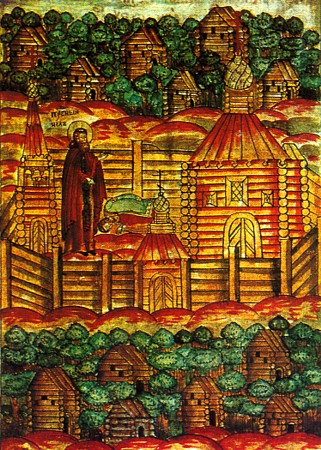A Moscow Saint Francis?
Nil Sorskij, the nestjažateli and the return to evangelical poverty

Ancient icon depicting Nil Sorsky inside his hermitage, Vologda region - Wikimedia Commons
In 15th-century Muscovy, monasticism was in decline due to disciplinary violations within monastic communities, often composed of unsuitable individuals — those who had embraced religious life merely to escape civic obligations, as well as criminals and dissidents confined to monasteries. Moreover, monks possessed vast land holdings accumulated over the centuries, particularly around the year 1492. According to the Byzantine calendar, which followed the Anno Mundi system (dating from the presumed Creation, 5,508 years before the Nativity), this year marked 7,000—believed to be the date of the Apocalypse. This looming threat prompted many landowners to make donations in an effort to save their souls.
It was within this context that the story of Nil Sorskij (1433–1508) unfolded. A monk trained in the Athonite tradition, Sorskij adhered to Hesychasm and withdrew into a hermitic life in a small hut. His example soon inspired a group of followers who became known as the "Non-Possessors" (Nestjažateli). They believed that since salvation was unattainable in this corrupt world, monks were obliged to withdraw from it, embracing solitude to dedicate themselves to penitence and spiritual prayer. This perspective led them to condemn monastic land holdings, viewing them as "theft of others' property" and the primary cause of the moral decline within monastic orders. They also advocated for monks to sustain themselves through manual labor rather than relying on others. To them, it was irrelevant whether religious institutions donated their wealth to the needy—according to Sorskij, charity should consist of spiritual gifts, not material ones.
Historians such as Codevilla and Graciotti have noted similarities between the Non-Possessors’ stance on monastic property and the views of the Church Fathers and Western mendicant orders. However, it is important to highlight a key difference: while Sorskij condemned monastic involvement in secular affairs and called for an ascetic retreat from the world, Saint Francis of Assisi preached full engagement of religious figures in worldly matters.
Giovanni Codevilla, Storia della Russia e dei Paesi limitrofi: Chiesa e Impero, vol. I: Il medioevo russo, secoli X-XVII, Milan, Jaca Book, 2016.
2025-10-16
Salvatore Ciccarello
